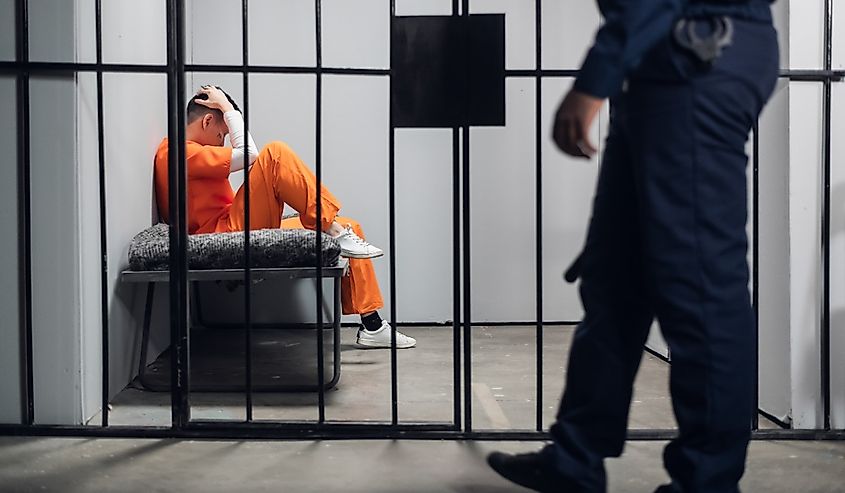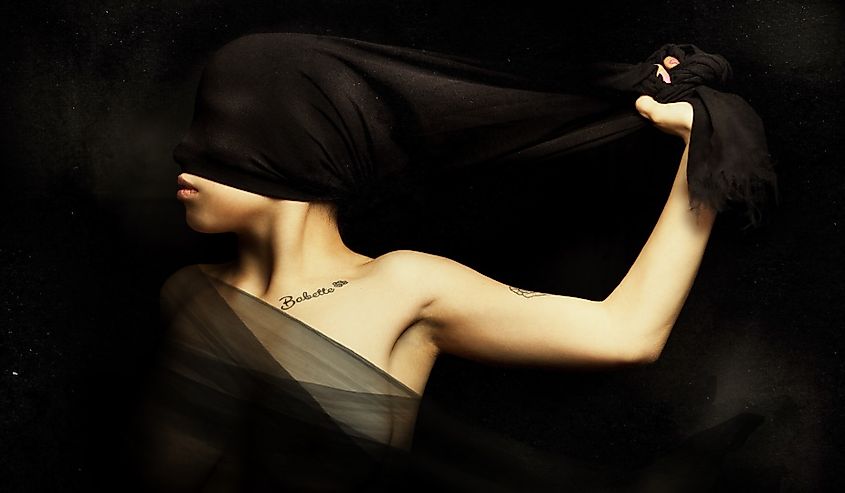
9 Philosophical Thought Experiments You Should Know About
Thought experiments are imaginative devices that can help us better understand philosophy. They are a useful tool in education and entertainment and can be a great way to apply complex concepts to practical situations. Since philosophy looks at questions about life, you can make a thought experiment for nearly any philosophical idea. Learn about some of the most popular ones commonly used in philosophical discussions.
The Trolly Problem

The trolly problem is an ethical thought experiment. It first appeared in philosopher Philippa Foot's 1967 paper, "Abortion and the Doctrine of Double Effect." To start off the thought experiment, imagine you have control of a railway switch. There is an out-of-control trolley headed your way. Up ahead, the tracks of the railway branch into two different paths. On the first track, there is a group of five people; on the other track, there is one person. If you stand, watch, and do nothing, the trolley will head down the first track and kill five people. However, your control allows you to switch the path of the trolley. This way, it heads down track two and kills one person instead of five. The dilemma in this situation is whether or not to flip the switch. A utilitarian answer would be to flip the switch and kill one instead of five.
Selective Surgery

Imagine you are a doctor in the future, and an ill patient comes into your practice. The patient's symptoms lead you to the diagnosis that their heart is failing. Without treatment, the patient is going to die. In your office, the patient passes out. Fortunately, the patient can be saved with surgery that will give them a synthetic heart. The patient can live what you consider to be a good life after this surgery. However, as you are preparing the patient for surgery, a small card falls out of their pocket. The card says for religious reasons; the patient does not want any synthetic organs. Now you must make a decision. If you do not install the heart, the patient will die. However, if you install the heart, the patient will survive at the cost of you violating their wish to have no synthetic organs.
At the heart of this thought experiment is a choice between honoring someone's individual rights and honoring an outside moral code. This is a relevant topic today in bioethics. Philosophers who advocate strongly for personal rights would argue that doing the transplant is wrong. While philosopher John Locke wasn't exposed to this thought experiment, he is someone who expressed the importance of individual rights and consent. According to Locke, individual consent is a fundamental part of creating a political society. In his view, doing the transplant on an unconsenting individual would be wrong.
The Bad Father

A thought experiment that tests loyalty against ethical principles is the bad father. In the thought experiment, there is a son who holds honesty as the highest value. However, his father is not an honest man. One day, his son catches him stealing from a local farmer. In this situation, the son must make a choice. He could turn his father in for breaking the law and stealing. Or the son might feel an ethical obligation to keep silent about his father's crime. While you might find this question silly, ask yourself the implications this scenario has on a larger scale. Would it be better for children to stay loyal and protect their parents or better for them to alert the authorities when their parents stray from the law?
This thought experiment is a variation of the thought experiments proposed by the ancient Greek philosopher Plato. He wrote a dialogue called Euthyphro, where Euthyphro takes his father, Socrates, to court. Euthypro argues taking his father to court is the right thing to do and the pious thing to do. However, Socrates disagrees with Euthypro about his impiety charges and gets into a debate with Euthypro about philosophical questions of universal justice, goodness, and piety. At the core of the philosophical thought experiment is the question of what happens when there is a conflict between our personal lives and the impersonal tenets we believe justice demands. The thought experiment brings old philosophical questions about justice to life.
Prisoners Dilemma

The prisoner's dilemma is a game that was created as a model of human cooperation. The experiment shows how people choose to cooperate or how they don't. The mathematician Albert Tucker is credited with formalizing the thought experiment. Today, a wide array of disciplines use the thought experiment, including philosophy, psychology, economics, and political theory.
For the experiment, imagine a cop arrests both Chris and Cindy for robbing a bank. They are in separate cells where they cannot communicate. Both want to be free and care more about their personal freedom than the freedom of their accomplice. A clever prosecutor will use their desire for freedom to his or her advantage. The prosecutor will tell each person separately that if they confess and their accomplice remains silent, they will drop all charges against them and their testimony to ensure their accomplice does serious time. If they both confess, the prosecutor will ensure they both get early parole. If they both remain silent, they will have to settle for sentences on firearms possession charges. The dilemma for the prisoners is that if they both confess, the outcome is worse than it would have been if they had both remained silent.
The prisoner's dilemma compares individual and group rationality. It shows there can be conflict between individual and collective interests. Conclusions drawn from the Prisoner's Dilemma have been used in modern-day philosophical discussions about arms races and the use of limited natural resources.
The Chinese Room

A thought experiment about artificial intelligence is the Chinese room, designed by philosopher John Searle. He asks us to imagine a situation where someone who only knows the English language is sitting alone in a room. They have instructions for changing rows of Chinese letters. Anyone outside the room would think the person inside the room understood Chinese since they would see them sorting through Chinese characters. However, this is not the case. The person inside the room just understands the instructions. Searle made this thought experiment to show that artificial intelligence cannot have a human-like mind. His thought experiment stresses that while there is understanding, there is not comprehension.
The Experience Machine

A thought experiment that will make you question the value behind experience, is Robert Nozick's Experience Machine. The experiment is from his book Anarchy State and Utopia. Imagine that there is a machine that will give you any experience you desire. You could enter the machine and have an experience that you were eating the world's best cookie or that you were an astronaut. While you are in the experience machine, you are floating in a tank with electrodes attached to your brain. The question here is if you should plug into this machine to preprogram your life experiences. While in the tank, you wouldn't know that you were in the tank, making the experience even more real. The thought experiment brings questions about the meaning of life. What is the purpose of life if we are plugging into a machine? Will plugging into a machine satisfy all of our desires?
The Ship of Theseus

The Ship of Theseus is a thought experiment that questions whether an object that has all of its components replaced or rearranged is in fact the original object. This paradox was recorded by Plutarch, Theseus, who asks if a ship that was fully restored and replaced completely, down to every single wooden part, was the same ship. Later, other philosophers expanded on this idea. Thomas Hobbes asked if the original planks of the first ship were entirely replaced and then the original planks were used to build another ship, if the second ship would be the original ship. The thought experiment asks questions about what the essence of an object is. The Greek philosopher Heraclitus attempted to solve this paradox. To do this, Heraclitus thought of a river that has water replenishing it. According to Heraclitus, this is the same river. However, Plutarch disagreed and claimed the nature of a river to scatter and then come together means you never step into the same river twice.
Original Position

Ever thought the system was unfair? The original position is a thought experiment centering around achieving a better form of justice. Developed by John Rawls, the thought experiment asks us to imagine that we are in a situation where we do not know our actual life. This way, we are behind what Rawls calls a veil of ignorance. This veil prevents us from knowing the political or economic system that we live under and the laws that are in place. From this position, we are then asked, with a group of other people behind the veil of ignorance, to look at a list of classic forms of justice. We must draw conclusions from different social and political philosophies. Then, we have to choose a system of justice that we believe would be best for everyone under this veil. This thought experiment calls us to question our beliefs about justice. It forces us to confront the flaws of our political and economic systems.
The Beetle in the Box

The Beetle in The Box thought experiment is also known as the Private Language Argument. Philosopher Ludwig Wittgenstein developed the thought experiment to challenge the way we look at introspection and how it informs the language we use. The thought experiment starts by imagining a group of individuals, each holding a box. The boxes contain what each individual calls their beetle. Nobody can see into anyone else's box. Everyone describes their beetle to each other. However, each person only sees and knows their own beetle. According to Wittgenstein, the descriptions are unimportant. This is because, over time, the individuals would understand the word beetle as the thing in a person's box. While the thought experiment might sound silly, it makes the comparison that human minds are like a beetle. We can never know what is in another individual's mind.
Why Use Thought Experiments?
Thought experiments help us explore philosophical concepts in a more practical way. For example, the trolly problem forces us to confront how we would apply our ethics in a situation. The point of thought experiments isn't to arrive at a specific answer. Instead, thought experiments force us to reason through our ideas and give us insight into solving complex questions. When you come up with an answer to a thought experiment, why you arrived at your answer is just as important as the answer itself.







